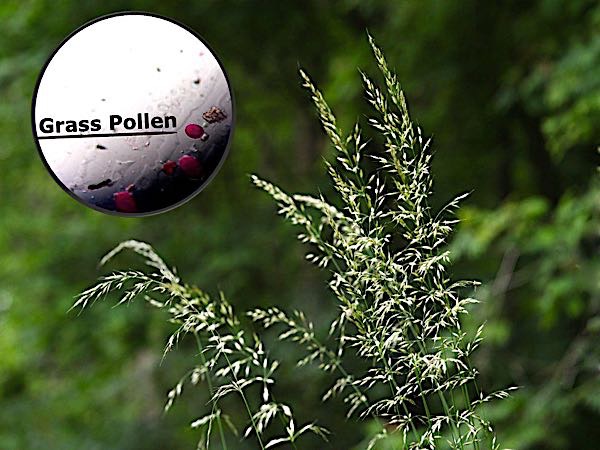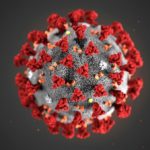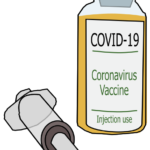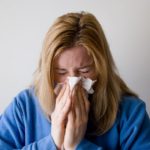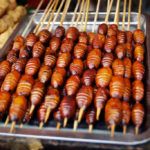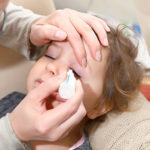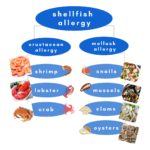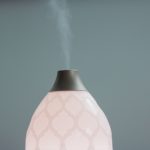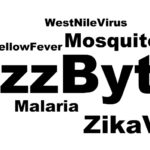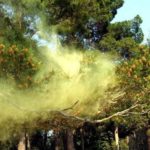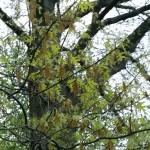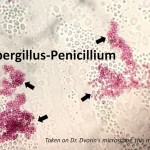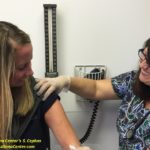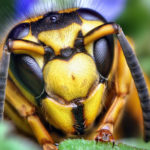Dr. Donald Dvorin, grass pollen, local pollen count, oak tree pollen, pollen, pollen count, The Asthma Center, tree pollen
It’s Raining, Pouring: Local Pollen Count Soaring
“All it took was sunshine for a few hours yesterday,” says Dr. Dvorin, “I even noticed more pollen in the afternoon.”
Tree pollen levels are extreme today. When pollen volume reaches the extreme range, there is the potential for severe allergy symptoms. Tree pollen volume nearly tripled in our air in the Delaware Valley with today’s count over 1300 cubic meters of air/24 hours (any count above 1000 is extreme – see How We Count Pollen)
Tree Pollen (Extreme)
Oak Tree Pollen continues to dominate the counts consisting of nearly 80% of tree pollen seen in both the urban (Philadelphia, PA) and suburban (Mount Laurel, NJ) air samples.
“Heavy Oak tree pollen, no question,” says Dr. Dvorin, after counting today’s air samples. “And more Birch, and quite a variety of 8 other kinds of tree pollen as well.”
Birch represents an estimated 16% of overall tree pollen. Other tree pollen observed include Ash, Juniper/Cedar, Hemlock, Mulberry, Pine, Sycamore, and Walnut.
Grass Pollen (Moderate)
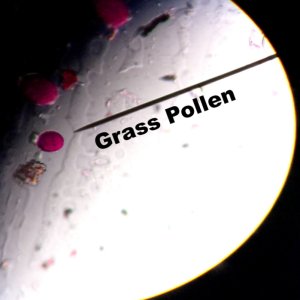
Grass pollen volume increased again for the third day in a row and is moderate.
Pictured above is an image of a grass pollen grain from today’s local air sample viewed through Dr. Dvorin’s microscope.
“Even the smallest amounts of grass pollen can cause symptoms in those who are extremely sensitive,” says Dr. Dvorin.
Why this sudden, steady rise? Because grasses are starting to pollinate. According to Dr. Dvorin’s historical data, grass pollen typically appears in early April, peaks during the month of May, and then gradually declines in June. This means that those with severe grass allergies have not yet begun to experience the peak of grass pollen this spring.
Outdoor Mold Spores (High)
Outdoor mold spores decreased a little again today and is high.
No Ragweed or Other Weed Pollen is seen.
What’s Ahead?
More rain, and possibly thunderstorms, are the forecast for our region for the rest of this Friday afternoon, and may possibly extend through the night into Saturday morning. The Delaware Valley experienced similar conditions earlier in the week which, contrary to what many expected, may have contributed to more pollen in the air (Dr. Dvorin explains how thunderstorms can influence pollen release in our recent blog “Grains Against the Rain.”
The Sun’ll Come Out Tomorrow
Most metrological forecasts for the Delaware Valley call for sunshine and warmer temps both on Saturday and Sunday afternoons, which is great news for all of us with weekend in plans. That’s the good news. Unfortunately, given Dr. Dvorin’s historical data and expertise, pollen levels will likely continue to provoke severe symptoms for those with allergies and asthma.
“It’s been an unusual season, with complicated weather patterns influencing the pollen process, up and down, and back up, “ he commented. “It’s bad [exposure to pollen], and it will get worse as things dry out and heat up. Grass is taking off, and we haven’t seen Pine tree pollen peak yet,” he warns.
What Can You Do? Be Pro-Active!
- Learn how to tell the difference
Sinusitis, Common Colds or Allergies? There’s are big differences between the three, though initial symptoms are often very similar to one another. Read more on Sinusitis Colds or Allergies.
- Grass pollen tips / Does the smell of cut grass bother you?
Mowing your lawn regularly can help cut down on the pollination of grasses on your property. However, many people experience allergy symptoms when exposed to the smell of freshly cut grass. Allergic reactions to mowed grass are more likely from the non-pollen parts of the grass containing allergenic proteins or molds being stirred up in the mowing process. When you mow your lawn, allergen concentration of this type will dramatically increase for a short period of time during and immediately after you mow. So, mowing your lawn will often be beneficial in the long-term, though it may aggravate your allergies short-term. Reactions to cut grass sometimes can go beyond the Spring grass pollination season as well. Again, this is not due to grass pollen but from exposure to mold spores or reactions to other grass antigens in the blades of grass.
You should also:
- Wear long sleeves and long pants when mowing the grass. Be sure to shower & wash your hair afterwards.
- Limit time outdoors during the early morning hours when the most pollen is released
- Sleep with windows closed and drive with windows up (Don’t miss our recent blog Shut the Door, Seal the Windows )
- Beware of tracking grass pollen into your home (kids, pets especially, newspaper sleeves, and on shorts and jackets)
- Shower and wash your hair after extended outdoor exposure
- Mother’s Day Flowers & Potential Allergens
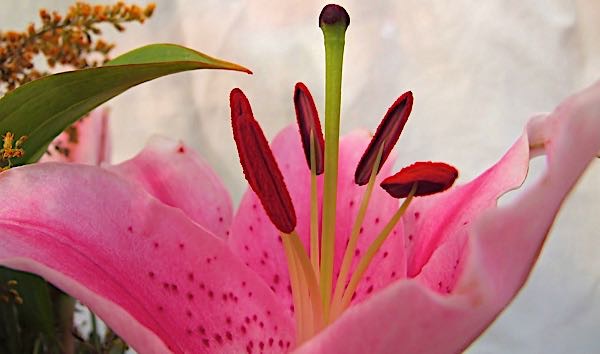
Flowers are synonymous with two things: Mother’s Day and allergies. With Mother’s Day around the corner, before you bring ornamental flowers indoors, it may be worthwhile to remove as much pollen as possible by removing the stamen.
For a less symptomatic weekend with Mom, try one of these flowers more suited for allergy sufferers.
- Begonia
- Clematis
- Columbine
- Crocus
- Daffodil
- Geranium
- Hydrangea
- Iris
- Lily
- Periwinkle
- Rose
- Tulip
- Zinnia
The pollen from flowers used in arrangements is heavier than tree, grass and weed pollen. This means that usually it is less of a trigger for allergy and asthma symptoms. However, there are several things to keep in mind when giving or receiving flowers as a gift:
- It’s a good idea to resist the temptation of placing your nose directly in a bouquet of flowers or touching the flowers, since direct contact on the hands, other parts of the skin, eyes and nose may trigger allergy symptoms.
- The fragrance from some plants may also have a very significant irritant effect if you have respiratory allergies and/or asthma.
- Reduce symptoms by avoiding the “worst offenders” such as chamomile, chrysanthemums, daisies, goldenrod, and sunflowers. Learn more here: Tips for Allergy Free Gardening
Make an appointment to see an allergist – Why Choose Us?
The best way to fight your allergies is to visit a board certified allergist, learn what your allergies are, create a treatment plan, and adjust as needed. No two allergy sufferers are alike, so don’t rely on over the counter medications when you could be targeting your symptoms with the help of our allergy experts!
Next Pollen and Mold Spore Count: Monday 5/9/2016
Be sure to check back in for The Asthma Center’s daily Pollen and Mold Spore Count, the Delaware Valley’s only Official count station which is certified by the National Allergy Bureau. Subscribe to receive our daily counts by email or check out some of our other blog posts to learn more about what is in the air, how it can affect you, and what you can do about it.
Get Relief-Saturday appointments are available!
The best way to manage your allergies is to find out exactly what’s causing your symptoms. The Asthma Center has 9 locations in PA & NJ with the following Saturday hours in addition to our normal Monday – Friday business hours.
May 7 and May 14: the Mount Laurel, NJ location will be seeing patients.
May 14 and June 4: the Langhorne, PA office will be seeing patients
Recent
Popular

